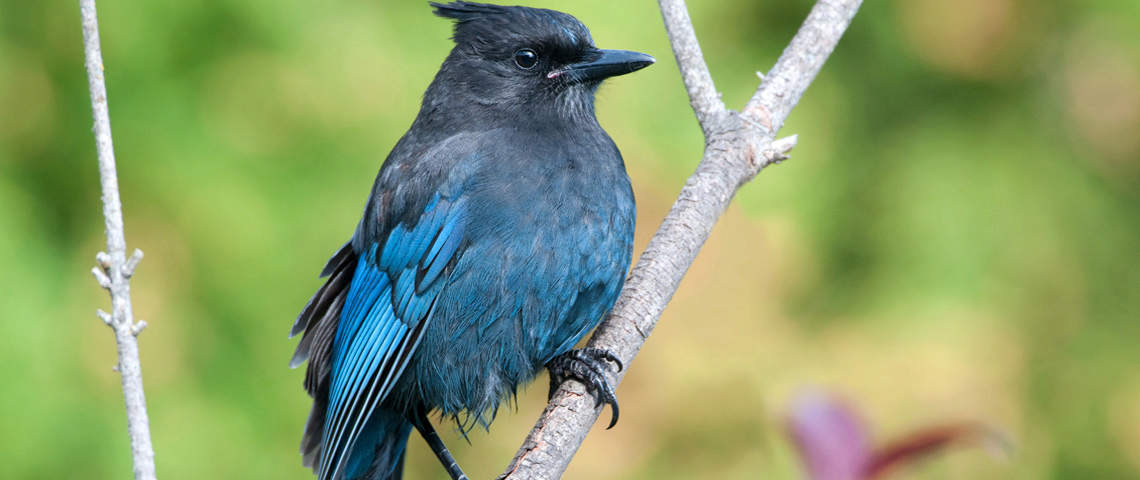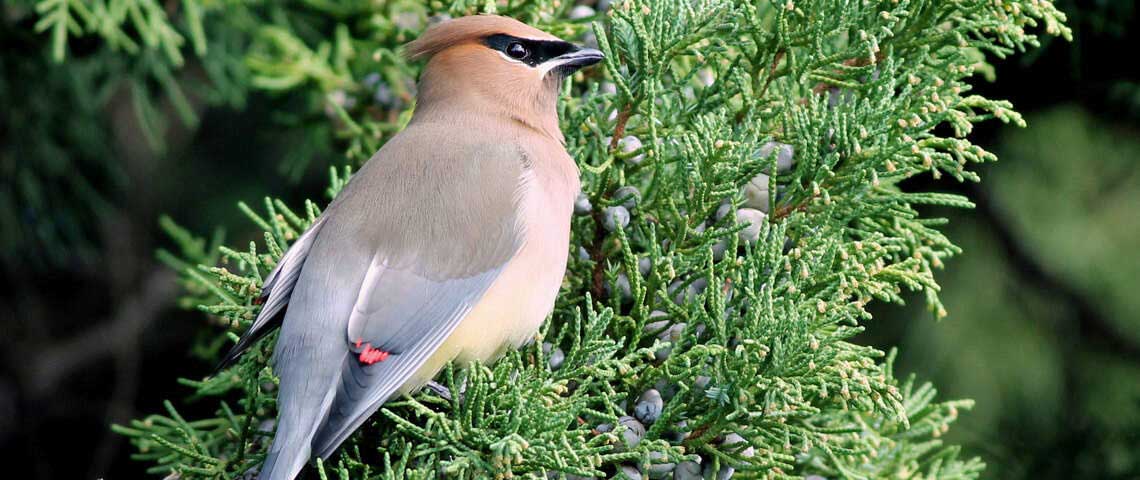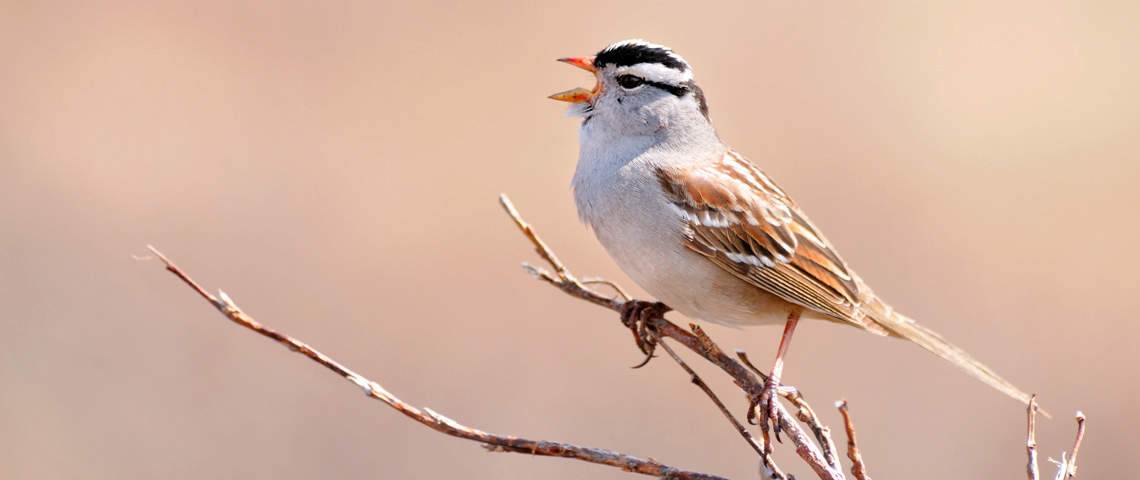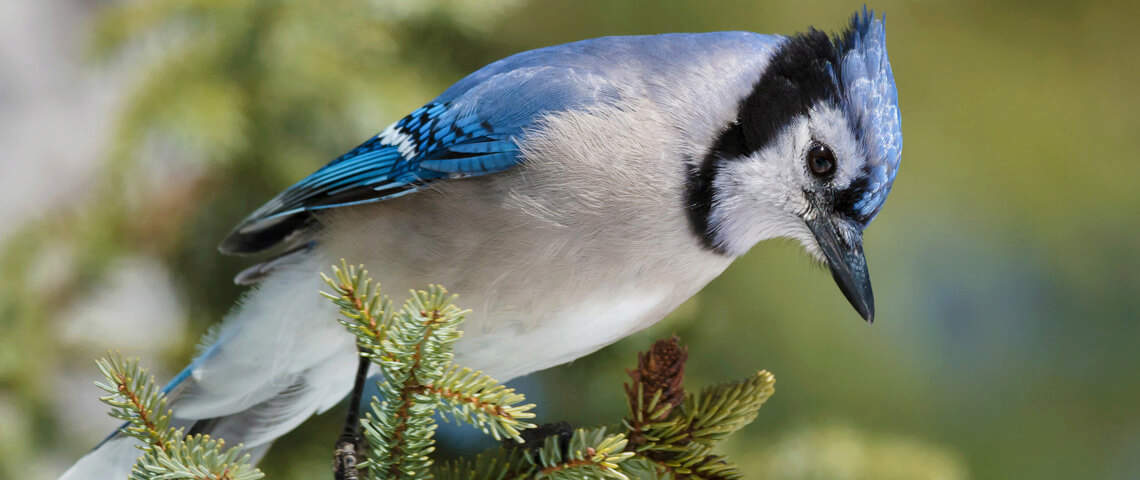Birding Tips: Building Bird Identification Skills
Have you ever wondered how birders can identify birds so quickly? Birding is similar to any other skill: practice makes perfect! You don’t have to be an expert to be a birder. All you need is a bit of curiosity and the proper gear to go outside. Binoculars can be useful to see distant birds, but they aren’t necessary. As you go outside and start to see some of your backyard birds, you may be surprised by the amount of birds you can already identify! Once you spot your mystery bird, spend a bit of time observing key characteristics, such as size and shape, color pattern, and behavior.
Identifying birds is a great way to become more aware of your local environment and the biodiversity all around you. This activity takes identifying birds a step further by creating your own journal to note distinguishing features and characteristics of your favorite species and others you might encounter. All you need are a few sheets of paper (or a notebook) and a pencil.
There are several ways to categorize birds, including by shape and size, food type, habitat, color pattern, and behavior. Feel free to organize the species in your journal in a way that makes sense to you. If you find yourself struggling, visit the All About Birds’ Bird Guide entry on American Robins for ideas on how to start your own journal. Using distinguishing features (such as those in the Bird Guide) can help you quickly identify the mystery bird perching on the branch in front of you.

Shape and Size
There are tons of variations in color plumage, behavior, habitat types, and food types. Birding can be much easier when you focus on the general size and shape of your mystery bird in relation to other species. You don’t typically recognize friends approaching you by small details, such as eye color or hair style, but by their overall appearance. Applying this same technique to birding can help you quickly identify certain bird species.
Is your mystery bird larger or smaller than a crow? As small as a chickadee? Larger than a sparrow? Making these comparisons is key to identifying birds, so it is useful to establish these size references to compare with new, unknown birds. Once you have their relative size nailed down, it is useful to note other distinguishing features of your mystery bird for more accurate identification later. Draw as many of these observations as you can in your journal, to use as a reference when trying to identify the bird to its species. These include beak size, bill length, tail length, wing length, head size, and many more. Noting some of these key details in your journal can help with tricky identifications, such as making the length distinction between a downy woodpecker’s shorter bill and a hairy woodpecker’s larger bill.
Once you have their relative size nailed down, it is useful to note other distinguishing features of your mystery bird for more accurate identification later. Draw as many of these observations as you can in your journal, to use as a reference when trying to identify the bird to its species.
These include beak size, bill length, tail length, wing length, head size, and many more. Noting some of these key details in your journal can help with tricky identifications, such as making the length distinction between a downy woodpecker’s shorter bill and a hairy woodpecker’s larger bill.

Food
An easy way to start practicing your identification skills is by bringing the birds to you. Feeders are great, simple ways to attract birds that might not otherwise visit your area. The best way to attract a variety of birds is to provide several different feeder types offering a diversity of food. Learn more about How to Choose the Right Kind of Bird Feeder through All About Birds.
If you don’t have a feeder, don’t fret! Many bird species will feed directly off the ground or a flat surface (such as a picnic table). You can still provide a variety of food types to attract different species, such as mealworms to attract the strikingly blue Steller’s Jays in the western region of the United States. Take notes in your journal about which birds visit your feeders and what type of seed they eat.

Location
A key skill to identify birds quickly and correctly centers on probability. To identify a mystery bird, start by identifying the type of habitat you’re in and asking yourself: what types of bird species am I most likely to find there?Habitat checks are useful before and after birding, to gain an idea of which species to expect, and to double-check the chances that the bird you’ve identified could actually be in this area. Be sure to note the surrounding habitat in your journal, to keep record of which species you find in this specific habitat.
The four major categories of habitats are woodland, aquatic, scrub-shrub, and open habitats. Woodland (or forested) habitats are typically defined by coniferous or deciduous trees. Aquatic (water) habitats include lakes, ponds, swamps, marshes, oceans, and/or shorelines. Scrub-shrub habitats have short woody plants and bushes, while open habitats include more grasslands, agricultural fields, and tundra. Some birds migrate, so their habitat and location can change based on the time of year. There are plenty of resources online that record when and where birds migrate. You might have a whole different community of birds in the summer than you do in the winter. Are the birds you see there year-round, or do they migrate? Where do they go when they aren’t in your backyard? You can find this information in field guides or from All About Birds’ online guide through range maps. You can keep track of these differences by jotting down a time and date of when you observed this particular species in this habitat.
Once you’ve made your initial observations, you might already know what taxonomy (group or family of birds) this mystery species belong to. It may seem intimidating at first, but you might be surprised by how many groups of birds you already know! Is your mystery bird a raptor, duck, or heron? Practice your new identification skills outside, enjoying the warming temperatures. You can also hang a feeder and/or provide a diversity of food types outside to bring a variety of bird species to your backyard!

Some birds migrate, so their habitat and location can change based on the time of year. There are plenty of resources online that record when and where birds migrate. You might have a whole different community of birds in the summer than you do in the winter. Are the birds you see there year-round, or do they migrate? Where do they go when they aren’t in your backyard? You can find this information in field guides or from All About Birds’ online guide through range maps. You can keep track of these differences by jotting down a time and date of when you observed this particular species in this habitat.
Check out eBird’s View and Explore Data page to look for birding hotspots or sightings of your favorite bird species near you. All About Birds’ page also has various resources to build your Bird ID Skills. For more tips on identifying birds through habitat, check out All About Birds’ Inside Birding 4-part video series:
Once you’ve made your initial observations, you might already know what taxonomy (group or family of birds) this mystery species belong to. It may seem intimidating at first, but you might be surprised by how many groups of birds you already know! Is your mystery bird a raptor, duck, or heron? Browse All About Birds’ Bird Guide by taxonomy, to get familiar with the main groups of bird species.
Practice your new identification skills outside, enjoying the warming temperatures. You can also hang a feeder and/or provide a diversity of food types outside to bring a variety of bird species to your backyard!
Now that you’ve learned a bit more about bird habitats and silhouettes, see if you can identify some (or all) of the bird species in the image below, before looking at the answer key. The printable version of the silhouette image is available for download on BirdSleuth’s page, which is also used in their Teaching Bird ID article:





